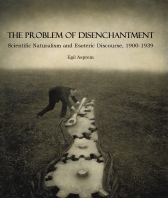In the previous post on Sheldrake’s Science Delusion I discussed the first two dogma, concerning the “mechanical philosophy” and its challenges, and the question of whether matter is conscious. As we saw there, Sheldrake comes out as a sort of modern-day vitalist (even though he claims to be an organicist I think his anti-materialism is actually more radical, placing him in the vitalist camp), and a mild supporter of panpsychism. In the present installment we shall look at the third dogma, where Sheldrake takes on a central conceptions of physics: that the matter and energy of the universe is constant, and subjected to laws of conservation and conversion.
3. “The matter and energy of the universe is constant”
With his discussion of this third dogma, Sheldrake’s real objective is to question the status of the conservation laws. That is certainly no mean task. The chapter dedicated to this dogma is a strange read, as perhaps one would expect. Judging from the span of its content it could have been entitled something like “what has dark matter got to do with anorexia”, but the reader would still remain hard pressed for an answer when completing the chapter.
Sheldrake makes a big point out of claiming that the discovery of dark matter and dark energy challenges the laws of thermodynamics. As in much of his argumentation, there is a grain of truth in this: theoretical physics has been working hard to find out precisely what the relations between “dark” and ordinary energy/matter really is, and how the conservation and conversion laws apply. But, of course, that is not because one has clearly identified a wonderful, weird tangible substance – “dark matter” – which is in every way material but upsets the laws of conservation. Dark matter and energy are hypothetical entities that might account for strange gravitational effects observed in deep space. One knows little about any physical entities out there, but choose terminology for the hypothesis that relate to things one does know something about. As is so often the case with mystery-mongering about physics, however, scientific nomenclature is treated with misplaced concreteness. Abstract terms are treated as physical objects, metaphorical descriptions as real features. (This is probably one of the most common fallacies in popular science and sadly it is to some extent encouraged by scientists in their attempt to make theories accessible.)
But even if we were feeling generous, and granted that the conservation of energy is actually contradicted by dark energy as it mysteriously propels the expansion of the universe, that would still not mean that the law’s applicability to ordinary matter and energy had come into question. Hence Sheldrake is going quite a bit too fast when he progresses from a discussion of the strangeness of dark energy to make the case that conservation must be abolished in accounting for human metabolism. This is another type of slippage common among mystery-mongers (just think of the countless misapplications of quantum-mechanical concepts to macro-physics).
It is dubious that dark energy makes the phenomenon of “inedia” much more credible – people who claim not to eat or drink for years, yet still apparently keep on living without too much difficulty (such as the ever-lovely “breatharians“). So what are we to make of the “unexplainable” cases Sheldrake mentions explicitly? As an historian of religion I find that Sheldrake’s accounts of some of these are strikingly naive – despite his attempt to come across as a sceptic. Consider his reminiscence of meeting a “holy woman” in Rajasthan, who was said by other locals to not have eaten in 43 years, and not producing any feces or urine:
“Of course I assumed that she must have been eating and drinking secretly. Yet her devotees were adamant that she was genuine. Some had known her for years, even lived with her, so had had the opportunity to see if she was eating behind the scenes. Either they were part of a conspiracy, or she was a very skilled deceiver. My skepticism was an immediate mental reflex. But when I met her, and talked to people who knew her, she did not strike me as a charlatan, but as a woman of sincere religious faith.” (p. 78; emphasis added).

Prahlad Jani, a famous Indian breatharian, here being inspected by a medical team. There has been a long controversy in India over the sadhu‘s professed ability to live without food and water for 70 years.
Clearly scepticism does not run very deep when one is ready to throw out overwhelmingly well-tested knowledge about thermodynamics because the “anomaly” happens to be a nice person, surrounded by nice trusting friends. But what I find most revealing with this quotation is the final sentence. There is no reason to think that there is a clear-cut difference between “charlatanry” and “sincere religious faith”. Trickery, illusion, and slight-of-hand have always been important tools of priestcraft, although in varying degree through historical periods and cultures. Holy trickery is not necessarily an insincere act of deception either, and surely not something that precludes really believing. Sheldrake happens to be shaped by a predominantly Protestant culture that has succeeded in instating the distinction between “genuine faith” and fake tricks. He also happens to be a scientist and a realist, so he assumes that someone who appears religiously devout is not cheating but actually producing “real” phenomena that can tell us something about the way the world works.
So how does he explain them? This is rather interesting: The careful reader will notice that when Sheldrake theorizes around phenomena such as inedia, he invariably reverts to argumentation that bases itself on – yes, you guessed it – the conservation of energy. Thus, the mysterious discrepancy between input and output of energy in a biological system, such as when a yogi claims not to have eaten in 40 years, is explained either by the organism’s ability to absorb energy directly from the sun, or through making use of other forms of energy as of yet unknown to mainstream science – such as “prana”. Well, if that‘s the case, then one is still dogmatically trying to make the strange case fit with the conservation of energy. The reasoning is that something is missing – hence one goes looking for it in other sources, such as the sun, the air, or the astral plane. A new source of energy accounting for that which mysteriously appears out of nowhere means playing by the same dogma Sheldrake claims to criticise. It permits a whole new set of “prana – kinetic energy” conversion laws. If one really wanted to ditch conservation, it would be better to say that the discrepancy of input and output is actual, attribute it to a miracle, and leave it at that. But it’s not a particularly scientific attitude, and it’s not the attitude Sheldrake seeks.
![]()
This work by Egil Asprem was first published on Heterodoxology. It is licensed under a Creative Commons Attribution-ShareAlike 3.0 Unported License.







“One knows little about any physical entities out there, but choose terminology for the hypothesis that relate to things one does know something about.” Egil, this sentence is hard to understand – perhaps there’s a typographical error? Or am I confusing the context? What I mean is that I can’t comprehend the actual syntax of the sentence…
The other thing that’s hard to grasp is this: ‘There is no reason to think that there is a clear-cut difference between “charlatanry” and “sincere religious faith”,’ i.e., there’s no reason for *whom* to think that? My apologies, because I’m afraid it may be obvious to most other readers (but just not to me)…The fact that “Holy trickery is not necessarily an insincere act of deception either, and surely not something that precludes *really believing*” doesn’t help me clarify this much, because it’s *difficult to appreciate,* for me, personally, that ‘He also happens to be a scientist and a realist, so he assumes that someone who appears religiously devout is not cheating but actually producing “real” phenomena that can tell us something about the way the world works,” mainly because so few hard-core scientists *that I’m familiar with* – you know, whom immediately come to mind – tend to make a habit of attributing to religious phenomena a vehicle for understanding nature.
Based upon what you’ve presented, Egil, it seems clear (to me) that “If one really wanted to ditch conservation, it would be better to say that the discrepancy of input and output is actual, attribute it to a miracle, and leave it at that. But it’s not a particularly scientific attitude, and it’s not the attitude Sheldrake seeks”; however, it would also seem clear that – if I’m understanding this correctly – Sheldrake persistently attributes his attitude to science? Egil, I actually find “Scientific delusions, or delusions about science? (Part three: muddled conservations)” to be interesting, but until some small parts of the syntax are unmuddled (at least in my own mind) then it won’t be completely transparent. I’m pretty sure I’ve got an article or two (and perhaps even an entire book) by Sheldrake in .pdf on my hard drive, but until I sort out a few minor details here, I’m slightly reluctant to pull some of it up…obviously no hurry, anyhow.
Thanks Kindly,
Paul
[…] who need to refresh their memories, previous installations in the series are found here, here, and here. Without further ado, let me get started on an evaluation of the fourth dogma ascribed to science: […]